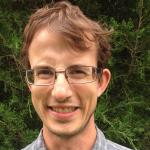Soil Organic Matter Dynamics
A special issue of Soil Systems (ISSN 2571-8789).
Deadline for manuscript submissions: closed (1 June 2018) | Viewed by 94819
Special Issue Editors
Interests: microbial biogeochemistry; organic matter transformations; mineral-organic interfaces; root-soil interactions; nutrient dynamics
Interests: soil chemistry; water chemistry; carbon cycle; redox reactions; emerging pollutants
Special Issues, Collections and Topics in MDPI journals
Interests: carbon stable isotopes and radiocarbon; redox reactions; lignin; organo-mineral interactions; trace gas fluxes
Special Issue Information
Dear Colleagues,
The formation and decomposition of soil organic matter and its interactions with the soil environment, aquatic systems, and the atmosphere are important for agricultural productivity, water quality, and climate.
It is increasingly recognized that soil organic matter (SOM) represents a continuum of progressively-decomposing, plant-derived organic compounds, along with microbial transformation products. At a fundamental level, SOM dynamics are thus governed by metabolic constraints on microbial transformations (e.g., a(biotic) depolymerization, reduction and oxidation), mineralogical restrictions on accessibility (e.g., mineral surface interactions and aggregation), and ecophysiological controls on the production of microbial residues (e.g., nutrient limitations or environmental stressors).
Understanding these critical environmental controls on SOM dynamics, as well as their interplay, is critical for accurate predictions of soil carbon storage, soil fertility, and greenhouse gas emission from soils in the future.
Authors are invited to submit current work on SOM transformations, residence times, and bioavailability, the interaction of SOM with minerals and metals, and pathways of microbial recycling and metabolite production. Work that directly addresses the response of processes governing SOM dynamics to ecosystems disturbances and climate change is particularly welcome.
Dr. Yu (Frank) Yang
Dr. Marco Keiluweit
Dr. Peter Nico
Dr. Steven J. Hall
Guest Editors
Manuscript Submission Information
Manuscripts should be submitted online at www.mdpi.com by registering and logging in to this website. Once you are registered, click here to go to the submission form. Manuscripts can be submitted until the deadline. All submissions that pass pre-check are peer-reviewed. Accepted papers will be published continuously in the journal (as soon as accepted) and will be listed together on the special issue website. Research articles, review articles as well as short communications are invited. For planned papers, a title and short abstract (about 100 words) can be sent to the Editorial Office for announcement on this website.
Submitted manuscripts should not have been published previously, nor be under consideration for publication elsewhere (except conference proceedings papers). All manuscripts are thoroughly refereed through a single-blind peer-review process. A guide for authors and other relevant information for submission of manuscripts is available on the Instructions for Authors page. Soil Systems is an international peer-reviewed open access quarterly journal published by MDPI.
Please visit the Instructions for Authors page before submitting a manuscript. The Article Processing Charge (APC) for publication in this open access journal is 1800 CHF (Swiss Francs). Submitted papers should be well formatted and use good English. Authors may use MDPI's English editing service prior to publication or during author revisions.
Keywords
- soil carbon cycling
- stabilization/destabilization
- carbon residence time
- enzyme kinetics
- thermodynamics of microbial respiration
- mineral-organic associations
- micro-aggregates
- sorption
- co-precipitation
- Anaerobic and aerobic metabolic pathways
- carbon use efficiency
- assimilation efficiency








